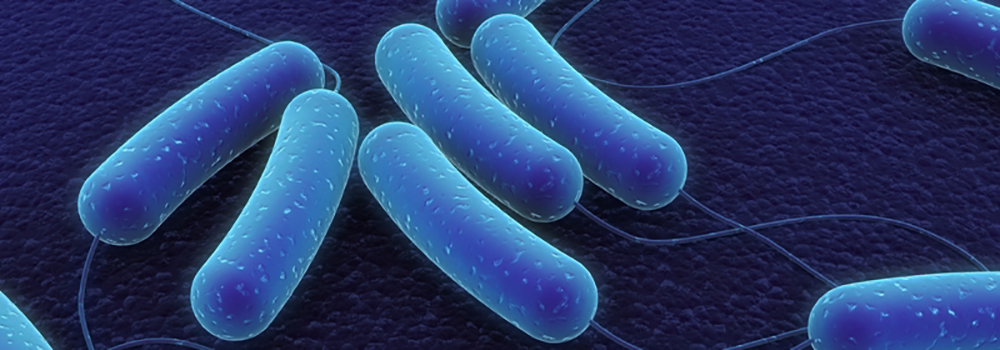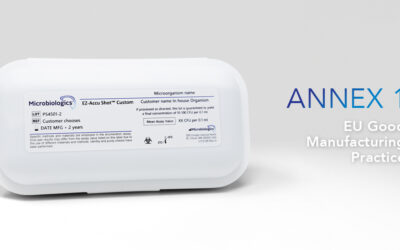If your manufacturing processes utilize purified water or highly purified water, Ralstonia pickettii should be on your list of microorganisms to control. In fact, it has become a microorganism of concern to sterile drug manufacturers because it is capable of passing through traditional 0.2-µm sterilizing-grade filters.
Additionally, R. pickettii has become recognized as a nosocomial pathogen particularly associated with immunosuppressed patients.
Where has R. pickettii been found?
- Pharmaceutical solutions including intravenous medications, saline, and chlorhexidine skin cleansing solutions.
- Municipal drinking water supplies, bottled water, dental water supplies, and hospital water supplies
- Biofilms in plastic industrial water piping
Description:
Gram-negative, motile, non-spore-forming rods. Cells are diminutive (0.5-0.6 X 1.5-3.0 µm) and possess one polar flagella.
Conditions for Growth:
R. pickettii grows aerobically. Its optimal temperature range for growth is 30 to 37°C but it can also grow at 41°C. The species will not grow at 5°C.
Colony Morphology:
Most strains grow well on Tryptic Soy Agar (TSA) and Nutrient Agar. Colonies are beige-colored, domed, smooth and glistening on TSA.
Habitat:
R. pickettii is found worldwide in soil and water.
Pathogenicity:
R. pickettii has been associated with nosocomial infections. It may cause bacteremia, meningitis, endocarditis, and osteomyelitis in debilitated and immunosuppressed individuals.
Contamination Potential:
R. pickettii is a common contaminant in purified water systems. It has been isolated from biofilms in industrial plastic water piping and from industrial high-purity water. It has also been found in intravenous medications, saline, respiratory therapy solutions, and chlorhexidine skin cleansing solutions. R. pickettii has been shown to penetrate a 0.2 micron rated membrane.
Family:
Burkholderiaceae. Genus: Ralstonia. Other members of the genus include Ralstonia metallidurans, a metal-resistant microbe which was isolated from wastewater at a zinc factory, and Ralstonia solanacearum, a plant pathogen which causes wilt in tomato, potato, tobacco and banana plants.
References:
Clontz, L. (2009). Microbial Life and Ecology. In Microbial Limit and Bioburden Tests: Validation Approaches and Global Requirements (2nd ed. pp. 1-34). Boca Raton, Florida: CRC Press.
LiPuma, J., Currie, B., Peacock, S., & Vandamme, P. (2011). Burkholderia, Stenotrophomonas, Ralstonia, Cupriavidus, Pandoraea, Brevundimonas, Comamonas, Delftia, and Acidovorax. In Manual of Clinical Microbiology (10th ed., Vol. 1, pp. 692-713). Washington, DC: ASM Press.
Ryan, M., Tony, P., & Adley, C. (2011), Genotypic and phenotypic diversity of Ralstonia pickettii and Ralstonia insidiosa isolates from clinical and environmental sources including High-purity Water. Diversity in Ralstonia pickettii. BMC Microbiology, published online, 11:194
Sundaram, S., Auriemma, M., Howard Jr, G., Brandwein, H., & Leo, F. (1999). Application of membrane filtration for removal of diminutive bioburden organisms in pharmaceutical products and processes. PDA J Pharm Sci Technol., Jul-Aug;53(4):186-201.
Suvarna, K., Lolas, A., Hughes, P., Friedman R. (2011). Case Studies of Microbial Contamination in Biologic Product Manufacturing. American Pharmaceutical Review, Jan/Feb 14(1).
Yabuuchi, E., Kawamura, Y., & Ezaki, T. (2005). Genus VII. Ralstonnia. In Bergey’s Manual of Systematic Bacteriology (2nd ed., Vol. 2, pp. 609-621). New York: Springer.






0 Comments